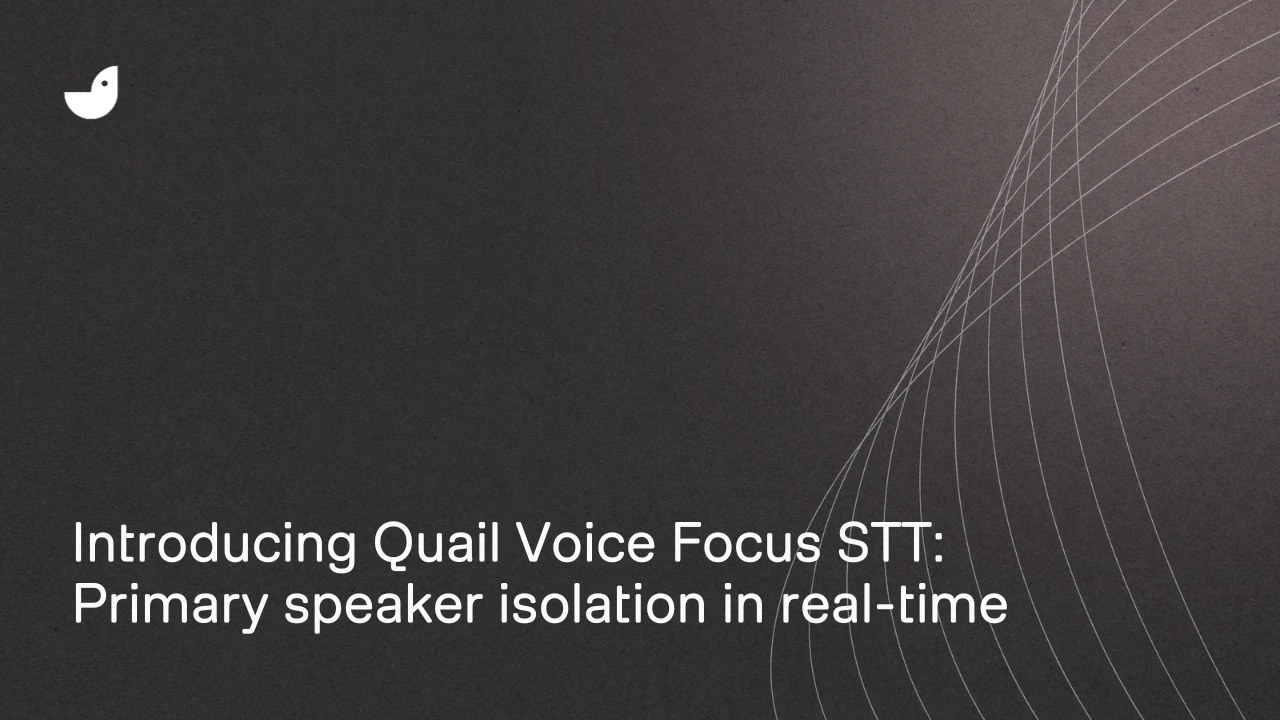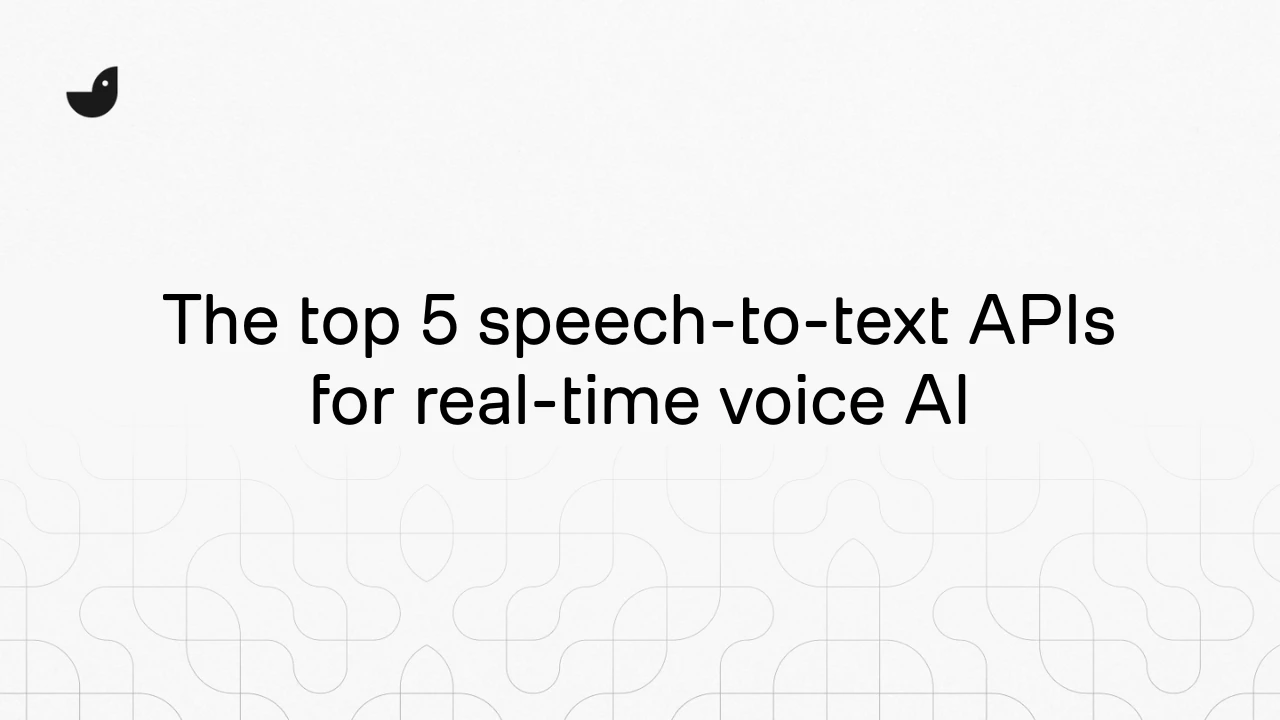Voice is the simplest form of communication and connection, and the easiest connection point between your customer and your product. For decades, customer/company relations have typically been managed by call centers. But while call centers still have a role to play in the modern market, voice agents powered by AI are offering new leaps in efficiency, cost effectiveness, and customer satisfaction. For both call centers and voice agents, audio enhancement is crucial.
The growth in voice agents over the past years is staggering, and the market is expected to reach $8.7 billion by 2026. But too often, voice agents falter at the final hurdle because of poor audio quality. Similarly, call center operators are challenged not because of their lack of knowledge but because of tricky connections on the other line. In this article, we’ll explore the top five benefits AI-powered audio enhancement can offer voice agents and call centers.
But first: what is audio enhancement?
AI audio enhancement uses artificial intelligence to clean, clarify, and optimize voice signals, either for recorded audio or in real time. Unlike traditional noise filters, it doesn’t just remove unwanted sound – it understands speech patterns, detects distortions, and intelligently reconstructs missing frequencies for maximum clarity.
Read more about how we manage audio enhancement at ai-coustics here.
1. Better recognition accuracy
Voice agents are built on a Tetris-block of technology which heavily relies on automatic speech recognition/speech-to-text (ASR/STT). STT, in turn, needs clean audio to perform at its best. Even the smartest natural language models struggle with muffled, distorted, or compressed speech.
By improving clarity and consistency, AI audio enhancement directly boosts speech recognition accuracy. With enhanced input signals:
- STT models detect words more precisely
- Intent recognition becomes faster and more reliable
- Fewer user repetitions or corrections are needed
- Conversation flow feels smoother and more intuitive
For voice agents in customer support or enterprise settings, this means fewer errors, shorter response times, and higher first-call resolution rates – translating directly into better customer experiences and cost savings.
ai-coustics’ new Quail STT model supports this by preserving the phonetic detail STT systems rely on, improving transcription accuracy even in challenging real-world audio.
2. Robust performances in noisy environments
Background noise continues to be a major problem for voice agents and call centers alike. Agents or call center representatives might work perfectly when their customer’s audio is clear and intelligible – but flounders when you add rush hour traffic or a bustling cafe to the soundscape.
Audio enhancement boosts performance and makes everything easier for your voice agent or customer service representative. AI-powered audio enhancement filters out complex noises like traffic, chatter, and wind in real time. Advanced noise suppression algorithms identify and isolate the human voice from environmental sounds, ensuring that your system focuses on the user’s speech alone.
This robustness expands where and how voice agents can be deployed – from smart home devices to mobile customer support tools – and keeps the experience seamless, even when the world around you isn’t quiet. It also improves customer satisfaction with call centers, because your employees will be able to hear their customers and perform at their best.
3. Emotion recognition and personalization
Your customers are communicating with you not just through their words but through pitch, tone, and rhythm. The next frontier of Voice AI is emotion detection: responding to the speaker by sensing whether they sound frustrated, excited, tired, or unhappy. To reach that frontier, we need clean audio.
AI audio enhancement makes it possible to capture subtle emotional cues that can be lost in low-quality audio.
That means a voice agent can respond with empathy to frustration or excitement to joy. In human-to-human interactions, too, emotion recognition is much easier to recognize and mirror when clean audio brings the speaker closer. For both AI and human interactions, your users will find the experience less transactional and more relational, deepening trust and increasing retention.
4. Seamless integration across devices and platforms
Let’s move to the technical side of things. Your users are working from a variety of devices as they go about their day: from a smart speaker in the home to their smartphone on the go, from their laptop at work to a tablet on holiday to a car system in traffic. And users expect the same standard of performance across every device, even as their voice and hardware input is shifting.
AI audio enhancement ensures uniform clarity and tone across every platform and device. It ensures your product maintains the same vocal identity, quality, and responsiveness, regardless of hardware limitations or network conditions. Whether it’s a call center based in another country or a signature AI voice persona, audio enhancement can work on both sides of the call to ensure your users always get the best performance.
In turn, this will build trust, boost performance, reduce friction, and ensure your product is just as flexible and diverse as its users.
5. A lift for your brand
Voice agents have already gone so far beyond the old school robotic voice. Today’s voice agents are clear, calm, and human: some people don’t even realize they’re talking to AI, rather than another person.
Where voice agents often fail is in following the conversation on the other side. They make turn-taking errors or misinterpret what your customer is saying. This isn’t a fault in the programming of the agent, but the audio on the other end of the line. When the connection is broken, the illusion of the voice agent fails
Integrating audio enhancement makes it easier for your voice agent to understand, process, and respond to the speaker. And it means that your brand won’t suffer from poor performance or customers who love the demo but find the actual experience of your product disappointing.
Clarity is key to connection
We can only speak to one another if we understand one another – robots and humans alike! Ensure that your company is prepared for the next stage of communications with AI-powered audio enhancement.
Learn more in our guide to fixing the audio input for voice agents – or book a demo.



